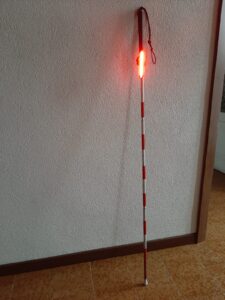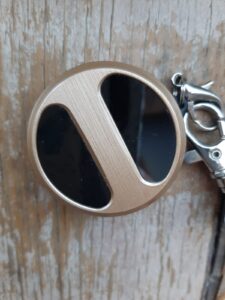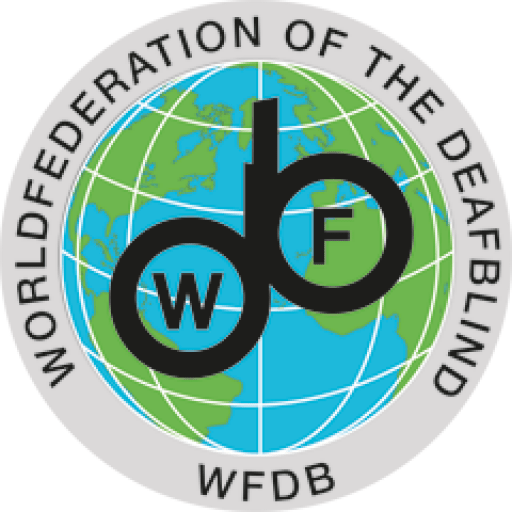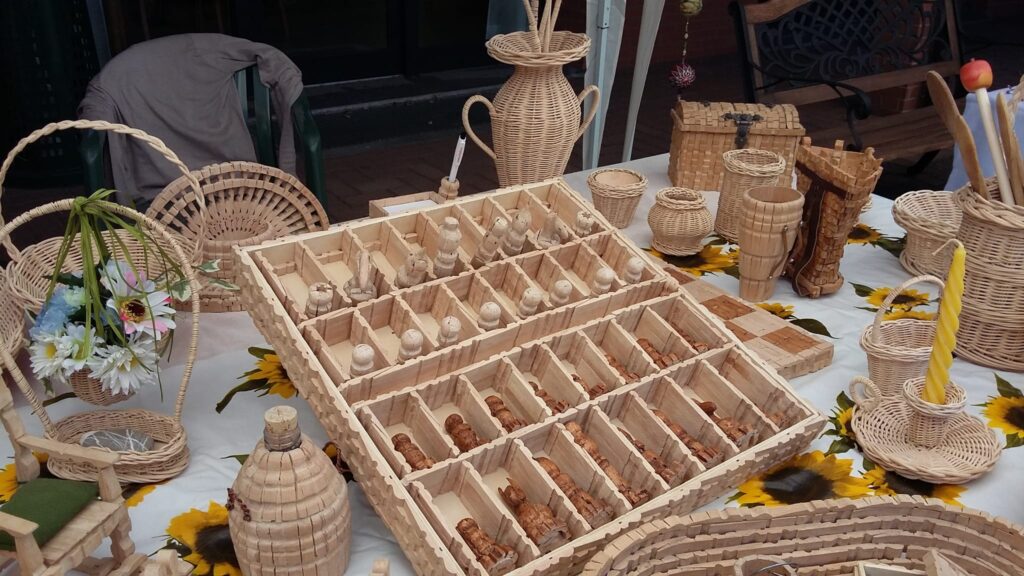Author: Lucia D’Arino (WFDB Program Advisor)
Introduction
Momi is a 75-year-old man with deafblindness living in Milan, Italy. He was born deaf in a hearing family. At the age of 30, his vision was severely reduced, and today, he has no sight nor hearing, which means direct communication with other people is limited, including with his own family and friends. Momi often requests the services of guide interpreters, including his wife, to be able to communicate, contribute and participate fully in society. Another important aspect of his life are leisure activities, such as handicrafts, which stimulate his creativity and the imagination, and encourages communication and socialisation with others.
Momi is a talented craftsman who uses wicker and clothes pegs to build different objects such as a chess board, baskets and vases. He has been carrying out this hobby independently for many years and is self-taught. Keen on passing on his expertise, after his retirement Momi completed training at a national association of persons with deafblindness to become a formal instructor. Today he is a handicraft teacher for people with disabilities and loves sharing his passion with others. This hobby has been a welcome diversion during the COVID pandemic and also made him feel active and useful. He is very proud of the exhibition he has set up in his own home, which friends and neighbours often visit. Momi also sells his designs at local markets and has entered many competitions for which he has obtained prizes and awards, and regional recognitions.
Communication
In his childhood, only spoken language was allowed for teaching purposes and Momi, like many deaf or hard of hearing persons, was punished whenever he communicated using sign language. However, he did not let that stop him from learning how to sign. Today, he communicates in standard Italian sign language, which he taught himself informally at the age of eight, outside school with his deaf peers. Furthermore, since he lost his vision, he additionally learnt to use tactile signing.
“It is difficult for me to communicate with those who do not know sign language. But there is another system called MALOSSI. MALOSSI works by pinching one or some parts of the hand, and this is another way people who are deafblind communicate. With my grandchild, the oldest one, I communicate very little, and he often uses the dactylological alphabet [signs made with the fingers] on the palm of my hand.”
The MALOSSI system is used in Italy, whereas the LORM alphabet (a method of tactile signing in which letters are spelled by tapping or stroking different parts of the listener’s hand) is used in the Czech Republic and some German-speaking countries. Momi often raises awareness of deafblindness and the different means of communication that exist.
“If you do not know sign language nor MALOSSI, one thing you can do is spell in the palm of my hand letter by letter”.
Momi’s deafblindness is a major communication barrier, even with his own family, which has an impact on their relationship. Momi currently lives with his wife Valentina. Valentina was a volunteer at a national association that supports people with deafblindness and was a qualified deafblind interpreter. They started exchanging emails, gradually fell in love with each other and have recently married. Valentina supports Momi as a guide interpreter in his daily life and provides assistance, interpretation and guidance both inside and outside their home. Valentina communicates with Momi via hand-over-hand signing , which is one way of communicating in sign language that also involves touch. In this form of tactile signing, Momi places his hands over Valentina’s, which allows for Momi to feel the shape, location, and movement of his partner’s hands. Momi is grateful for Valentina’s assistance as very few persons with deafblindness can have access to a guide interpreter all day every day.
Impact of COVID-19 in daily life
During the COVID-19 lockdown in Italy, Momi felt very isolated. Due to social distancing and restrictions, Momi could not communicate by touch with other people nor travel. Also, public life and social activities were extremely limited, as well as guide interpreter services for non urgent matters. Due to this, Valentina became his window to the world, as she would interpret for him the news on TV and latest updates regarding the pandemic. Because of her, Momi was able to remain in touch with his friends and family, his representative organisations as well as recent news about what was happening in the world. This situation shows that persons with deafblindness need access to services such as personal assistance and guide interpreters to avoid isolation and encourage the integration of this specific group in society.
“My wife is the person who helps me the most and who I am with all the time. She is the most important person because of the communication issues. I barely see [the rest of] my family, to be honest.”
As for many people, Momi’s life has changed with the pandemic, as his routine and normal life have been disrupted, for example, he quit going to the gym and swimming which he loved to do and which had a positive impact on his physical and mental wellbeing.
“Right now, because of the Coronavirus pandemic I do not travel to other places alone. I usually did, I was able to go to another village, but now I do not, only when I am accompanied by Valentina. As a sightless person, I rely on touch [to communicate, navigate a space, etc], but now I cannot touch things that I normally would.”
The importance of technology
Assistive technology and adapted devices are very important for persons with disabilities. For instance, Momi uses a braille line that connects to his computer to write and read emails, which is his main channel of direct communication with friends and family. Furthermore he uses a red and white cane, which also includes a light that can flash at night to increase his visibility to others. He also uses a small device, which he always carries in his pocket and can be activated by Momi in case he needs immediate assistance. By pressing a single button, his wife is instantly alerted.
Momi wishes for technology and devices in his home to be adapted and meet his needs, to be able to live more independently and feel safer. However, these devices either do not exist or are too expensive. For instance, a braille line that connects also to a tablet or a phone (apart from his computer) would allow him to use WhatsApp or text messages, and communicate with other people, participate in group chats, etc.. Furthermore, as he says:
“It would be useful to have alarms adapted for people who are deafblind because in my case, I have a security system at home to avoid burglars coming into my house, but as I cannot hear it and its not adapted, I never turn it on. The same goes for smoke detectors.”
Momi hopes that technologies and assistive devices will become increasingly adapted to persons with deafblindness. In the meantime, he will continue to overcome the barriers he encounters and find creative solutions to these challenges. With his positive and enthusiastic character, he is very grateful for the life he has and will continue dedicating time to his handcrafts. He hopes for the pandemic to quickly end, so that he can communicate by touch with more people and resume his activities and social life.



